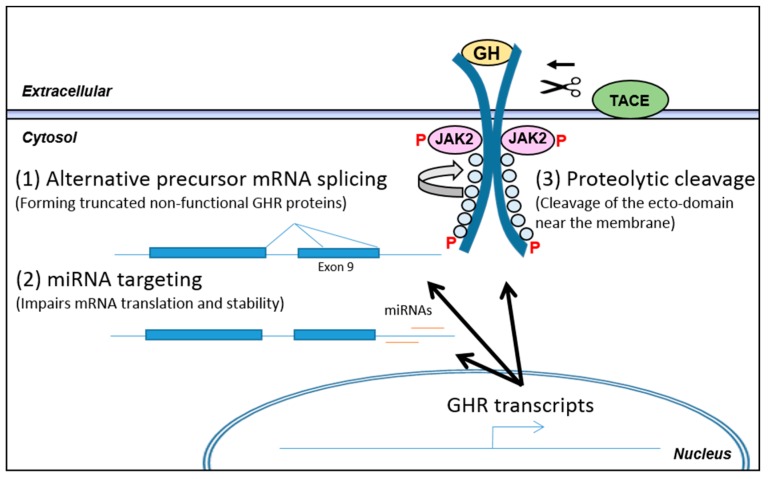Figure 4.
Post-transcriptional regulation of GHR. Following transcription of the GHR gene, the fate of the resulting pre-mRNA/mRNA/protein is influenced by different processes which impact the functionality of the resulting protein product. The 3 arrows indicate the possible post-transcriptional modifications limiting functionality of the mature GHR protein (1) Alternative splicing of the pre-mRNA has been described, where exon 9 is partly or fully being skipped. This introduces premature stop codons, leading to formation of truncated GHR proteins lacking the entire intracellular domain. This renders the receptor functionally dominant negative when the truncated variants complexes with full length variants. Regulation of this alternative splicing is still incompletely understood; (2) Sparse reports have evaluated miRNA targeting of the GHR mRNA and identified miRNA (miR)-129-5p, miR-142-3p, miR-202, and miR-16 to target GHR in cell lines. The regulation and the significance of miRNAs in GHR regulation is still unknown; (3) TNF-α-converting enzyme (TACE) is upregulated during inflammation and functions as a “sheddase” for TNF-α but does also target the GHR protein. Cleavage of the GHR ecto-domain (indicated by scissor and arrow) disrupts GHR function and releases the ecto-domain as GH binding protein. TACE functions mainly in the secretory pathway but also on the cell membrane.

